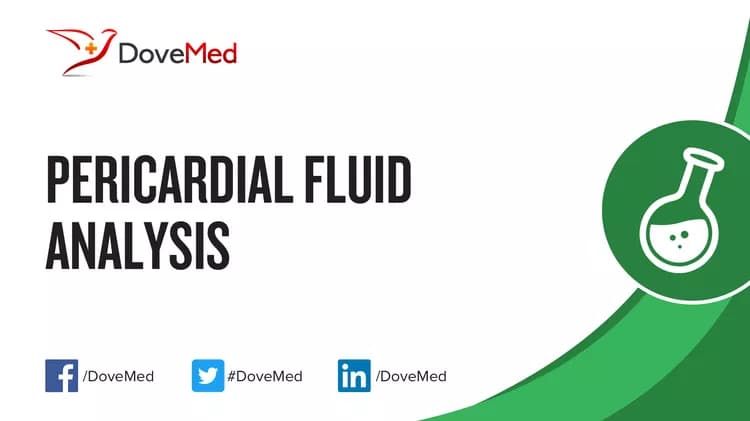What are the other Names for this Test? (Equivalent Terms)
- Analysis of Pericardial Fluid
What is Pericardial Fluid Analysis? (Background Information)
- The pericardium is a protective membrane that encapsulates the heart. It is filled with pericardial fluid. The fluid cushions and lubricates the heart, as it pumps blood
- The pericardium is a continuous, two-sided membrane. To visualize this, imagine your fist pushing against a balloon. The fist represents the heart and the balloon represents the pericardium
- The side closest to the heart is the visceral pericardium. The outer side is the parietal pericardium. Between these layers, floats the pericardial fluid
- The mesothelial cells produce pericardial fluid. Normally, these cells produce it in small amounts. However, during irritation and infection, the pericardial membranes may become inflamed and pericardial fluid may accumulate
- Excessive levels of pericardial fluid may interfere with the heart’s ability to pump blood properly. This may cause a variety of symptoms including cardiac tamponade, or the inability of the heart to fill normally after pumping
- Pericardial fluid is a pale yellow color fluid and consists of mainly cells, proteins, and other factors. However, with certain conditions this composition may change. These conditions include:
- Transudate: Slow leakage of dilute fluid into the pericardial cavity, due to osmotic and hydrostatic pressure imbalances. Common causes include high blood pressure and puncturing of the membrane
- Exudate: Rapid leakage of concentrated fluid into the pericardial cavity, due to an active immune response. A common cause of this is inflammation from an infection
- Additionally, during ischemic heart disease, where the heart is deprived of oxygen, the levels of angiogenic growth factors in pericardial fluid increase. Angiogenesis refers to blood vessel formation. Angiogenic growth factors help increase blood supply to the heart
The Pericardial Fluid Analysis evaluates several characteristics of the pericardial fluid. These include:
- Appearance: Color, turbidity, and other visual properties
- Specific gravity: Density relative to water
- Total protein content
- Fluid-to-serum protein ratio, which is the protein content relative to that of blood serum
- Lactate dehydrogenase (LDH): A common enzyme in cells of body tissues whose presence indicates injury or disease
- Fluid-to-serum LDH ratio: LDH levels relative to those of blood serum
- Fluid cholesterol
- White blood cell count
What are the Clinical Indications for performing the Pericardial Fluid Analysis?
Following are the clinical indications for performing a Pericardial Fluid Analysis test:
- Following up to a chest x-ray or echocardiogram
- Chest pain or tightness, especially if relieved by leaning forward
- Trouble breathing
- Fever
- Abnormalities in heart rhythm
How is the Specimen Collected for Pericardial Fluid Analysis?
Following is the specimen collection process for Pericardial Fluid Analysis:
Sample required: Pericardial fluid
Process: Insertion of a needle through the pericardium (pericardiocentesis)
Preparation required:
- No special preparation is needed prior to the test
- However, a 12-hour fasting may be required in certain cases. Your physician shall accordingly advise on the duration of fasting, if needed
What is the Significance of the Pericardial Fluid Analysis Result?
The significance of Pericardial Fluid Analysis is explained:
- Increased pericardial fluid levels may indicate:
- Hemorrhagic pericarditis
- Malignancy (malignant pericardial effusion)
- Malignancy (malignant pericardial effusion)
- Postmyocardial infarction syndrome (Dressler’s syndrome)
- Family history of cardiovascular disease
- Rheumatoid disease or systemic lupus erythematosus
- Tuberculosis causing pericarditis
- Bacterial pericarditis
- Fungal pericarditis
- Viral pericarditis
- Decreased pericardial fluid levels may indicate:
- Bacterial pericarditis
- Malignancy (malignant pericardial effusion)
- Rheumatoid disease or systemic lupus erythematosus
The laboratory test results are NOT to be interpreted as results of a "stand-alone" test. The test results have to be interpreted after correlating with suitable clinical findings and additional supplemental tests/information. Your healthcare providers will explain the meaning of your tests results based on the overall clinical scenario.
Additional and Relevant Useful Information:
- Certain factors interfere with the results of Pericardial Fluid Analysis. These include food and fluid consumption, 6 hours prior to testing
Certain medications that you may be currently taking may influence the outcome of the test. Hence, it is important to inform your healthcare provider of the complete list of medications (including any herbal supplements) you are currently taking. This will help the healthcare provider interpret your test results more accurately and avoid unnecessary chances of a misdiagnosis.
Related Articles
Test Your Knowledge
Asked by users
Related Centers
Related Specialties
Related Physicians
Related Procedures
Related Resources
Join DoveHubs
and connect with fellow professionals


0 Comments
Please log in to post a comment.